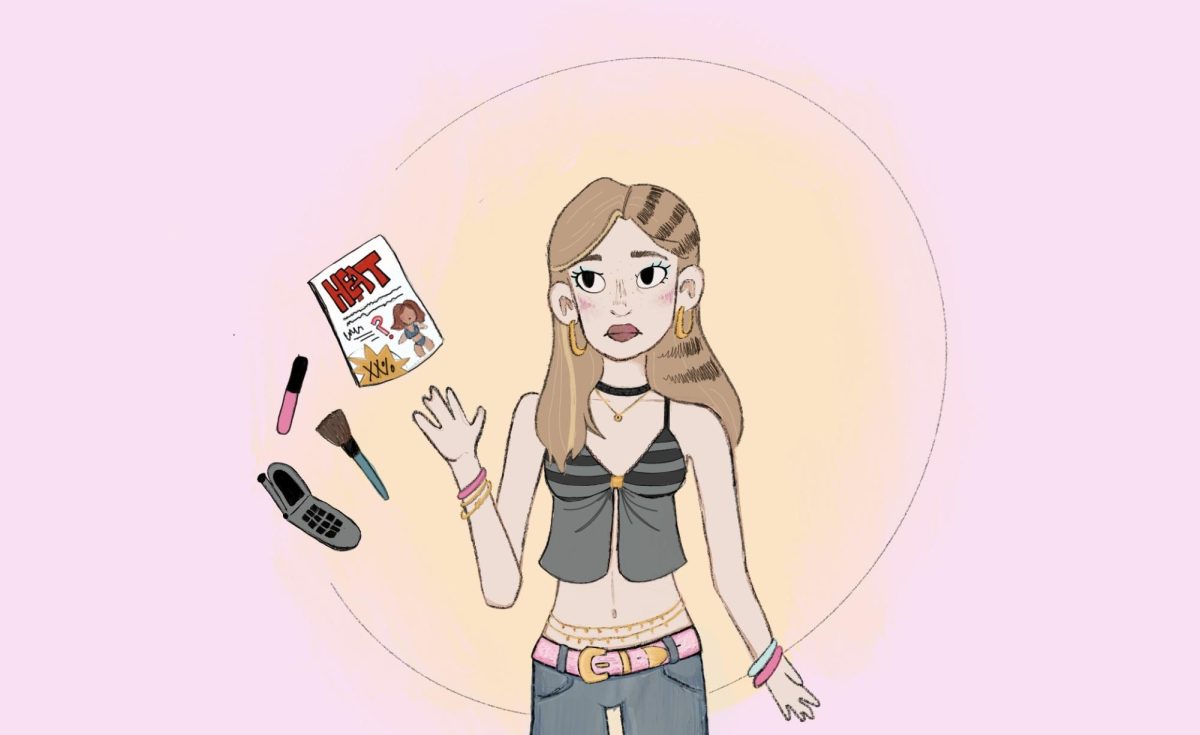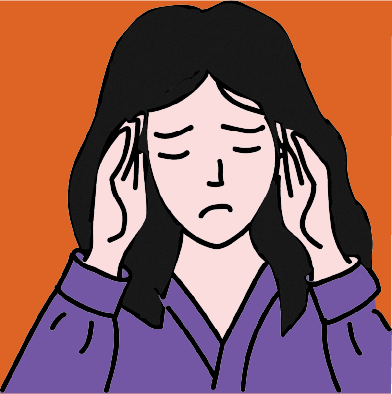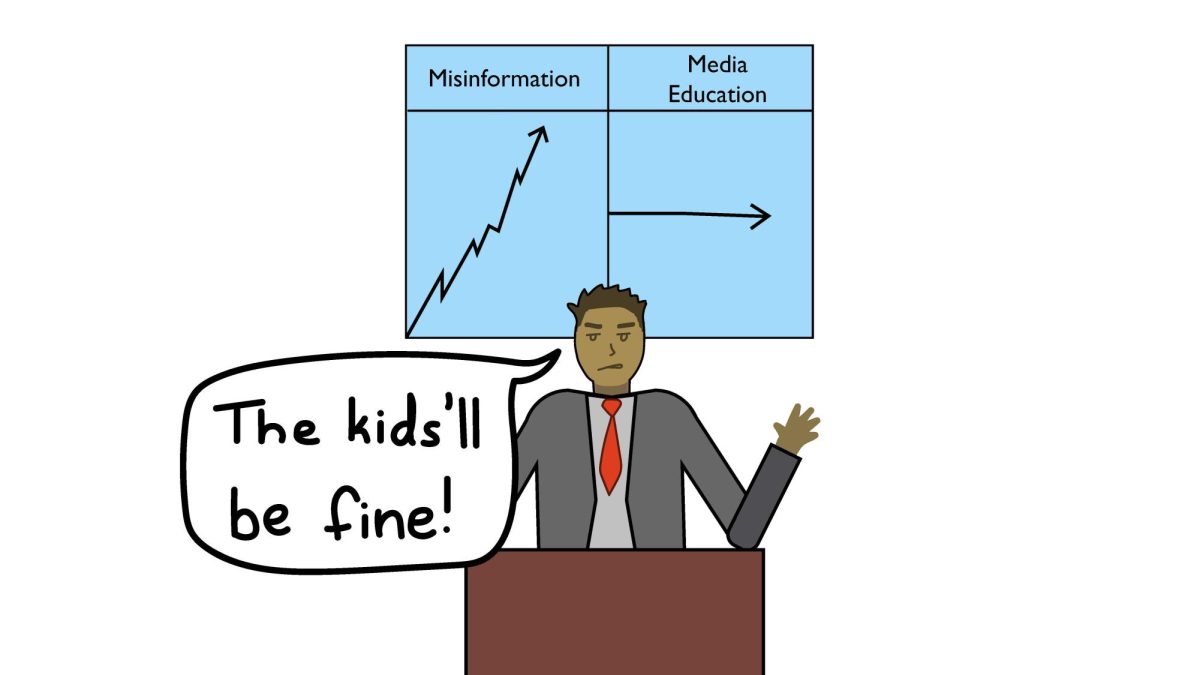When you think of the 2000s, what’s the first thing that comes to mind? Y2K fashion was gaining popularity, embracing colors, patterns and low-rise jeans. Artists like Britney Spears, Destiny’s Child and NSYNC flooded the markets. Social media wasn’t quite as accessible as flip phones were the closest thing anyone had to mobile communication. While the decade seems to have been left into the past, there are several parallels between life in the 2000s and today’s popular trends — some more harmful than others. The era amplified toxic diet culture and became the pivotal decade for harmful perception of body image. Magazines, movies and television shows pushed unrealistic beauty standards. Despite a current inclination to embrace diverse body types, toxic beauty standards from 2000s media have become so ingrained that they still fuel an overwhelmingly negative attitude towards body image in young women.
Most media from the 2000s featured thin female celebrities to promote an “ideal” body type featuring thigh gaps and small waists. Heat and People — popular 2000s magazines that marketed towards women and — focused primarily on celebrity life and frequently highlighted their appearances, especially regarding their body size. Heat published several issues with titles such as “Best & Worst Beach Bodies of 2004” and “2005’s Skinniest Celebs.” Accompanying photos featured thin, tan supermodels in bikinis to compare to pictures of celebrities that highlighted their cellulite or pale skin. Oftentimes, these magazines only spotlighted instances of celebrities at their “worst.” Magazines frequently updated audiences if celebrities gained or lost too much weight, revealing that slight changes in body size or appearance could be enough for the front cover. This constant public discussion about body types has caused young women to believe that they have to be skinny to be attractive. Media in the 2000s had a massive influence on self-perception, especially towards female audiences, and that still holds true today. It is extremely prevalent on social media platforms, which reinforce these same unrealistic standards.
The idealization of thinness also pervades rom-coms and chick flicks — movies that are often made for an audience. A prime example is The Devil Wears Prada. Released in 2006, the film follows Andy, a new assistant at a magazine publishing company called Runway, played by Anne Hathaway. Andy is criticized for eating a bagel for breakfast and getting lunch in the office cafeteria. A male coworker says “You do know that cellulite is one of the main ingredients in corn chowder,” and when she responds to say that she’s only a size 6, he replies, “which is the new 14.” Andy is in no way overweight, yet the constant criticism of her body in the film makes her appear as such. Later on, she is surrounded by models who are possessed by the idea of being thin. Under this pressure, Andy starves herself to lose weight and drops to a size four. This transformation is celebrated in the movie, and she is portrayed as more desirable as a byproduct of this weight loss. Because of how her body is portrayed, the film creates an extremely unrealistic standard of beauty, and the only “solution” presented is to restrict eating. This idea can be extremely damaging to female audiences because it continues to correlate thinness with attractiveness and only provides harmful “solutions.” Nowadays, this same idea is conveyed through influencers and actors as these same thin beauty standards are making a reappearance. This constant criticism of female bodies represented in various other TV series, such as Friends, has paved the groundwork for movies and TV shows to monopolize this criticism with the rise of toxic diet culture.
Diet culture in the 2000s resulted from this repeated inclination and desire to be skinny. The term used frequently today, “low-carb diet,” stems from one of the most notorious diets of the 2000s, the Atkins diet, which was first created in the 1960s. It grew to popularity not only because of its results, but because of celebrities and brand names that endorsed it. Consisting of low-carbohydrate, high-protein foods, supermodels — and later, younger girls — used the Atkins diet as a way to rapidly lose weight and attain a flat stomach. Magazines titled “Hollywood’s Secret Diets: Get Thin Fast!” and “How Mariah Got So Thin!” only made dieting more popular. Suddenly, the majority of media was obsessed with various ways to get and stay thin, with a very faint line between what was considered dieting and disordered eating.
While many of these toxic standards originated in the 2000s, none of them stayed within the decade. Many of these expectations are still ingrained among young women as a byproduct of social media. The recent rise in weight loss and drug abuse among online celebrities continues to establish the idea that popularity and beauty stem from thinness. Developed in 2017, Ozempic was approved as a diabetic treatment and has since been abused by many celebrities as a way to drop weight easily. In an Instagram post titled ‘Heroin Chic is Back,’ Journalist Paula Froelich described the 2025 Golden Globes award ceremony as a “parade of skeletons,” referring to the abundance of extremely thin actors and actresses. Similarly, the Kardashian family has long used body-modifying surgeries and extreme dieting to conform to trending beauty standards. An example of this is the removal of Kim Kardashian’s BBL, a procedure she completed to appear fuller and meet beauty standards in 2010. From thick to thin, Kim represents how fluctuating beauty standards can corrupt self perception. From the 2000s to now, media consumption has significantly increased, causing celebrities and social media to have a drastic influence on teenagers.
Because social media is now used by such a wide variety of age groups, it can cause younger girls to start dieting when they shouldn’t or contribute to other mental health disorders like body dysmorphia at a young age. According to a study conducted by Mental Health Foundation UK, 40% of young people — 57% of which were girls — said that images on social media contributed to their negative perception of their body image. In this way, toxic standards from the 2000s are still shaping beauty standards today — the only difference is the media platform.
Beauty standards are inevitable. Preferences cannot be avoided, but they can be reduced to an opinion instead of a toxic trend that harms young women with its popularity. Recent efforts like the body positivity movement, which began in 1969, have drastically changed some ideas around body image. The ESPN body project, which highlights the bodies of successful athletes of all sizes, is a positive reinforcement that all bodies are different. Another example of this was the 2024 Victoria’s Secret Fashion Show, where a multitude of body shapes, sizes and abilities were represented on the runway. Whether this body positivity reinforcement comes from events and projects like this, or from a shift in how parents communicate body image to their kids, it is crucial to the well-being of young women who struggle with self-perception. While the image of what a “front cover” body looks like has changed, the underlying toxicity that remains amplified from the 2000s still has a massive influence on how body image and beauty standards are perceived.










